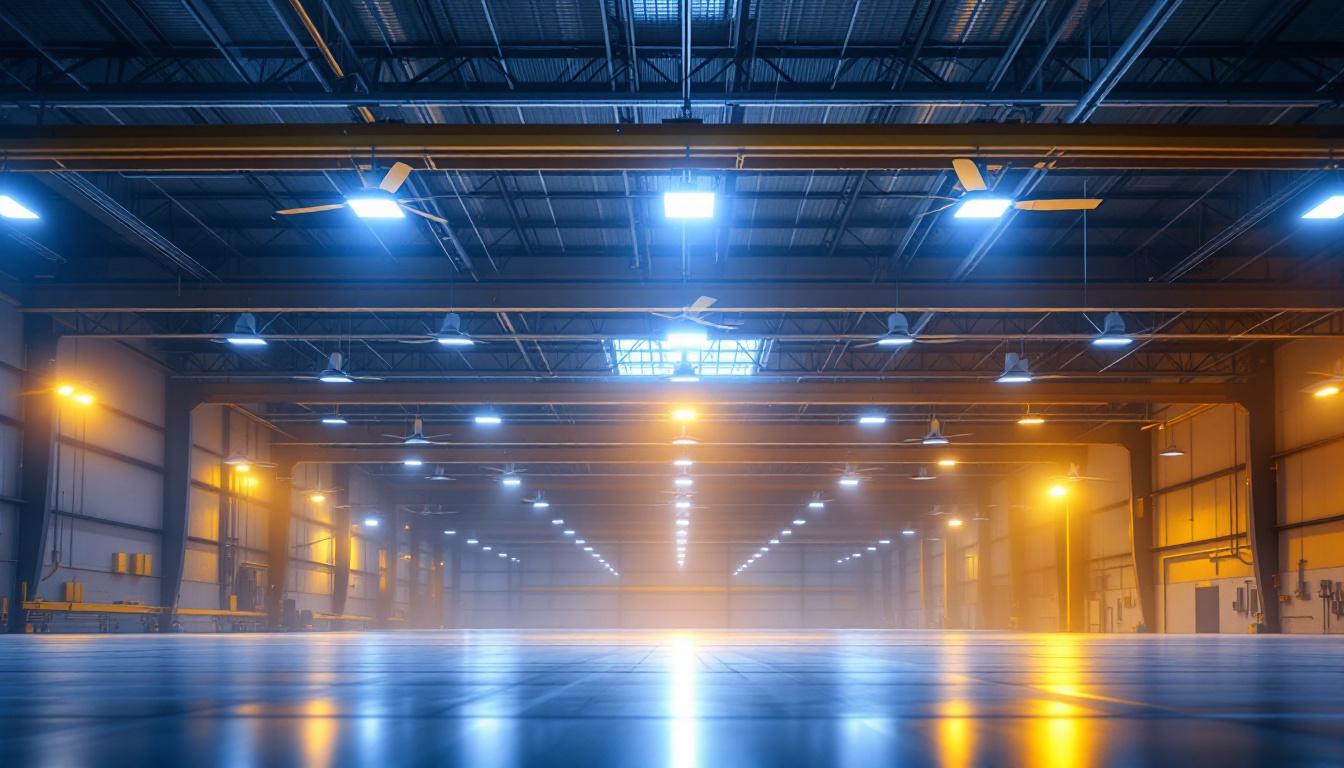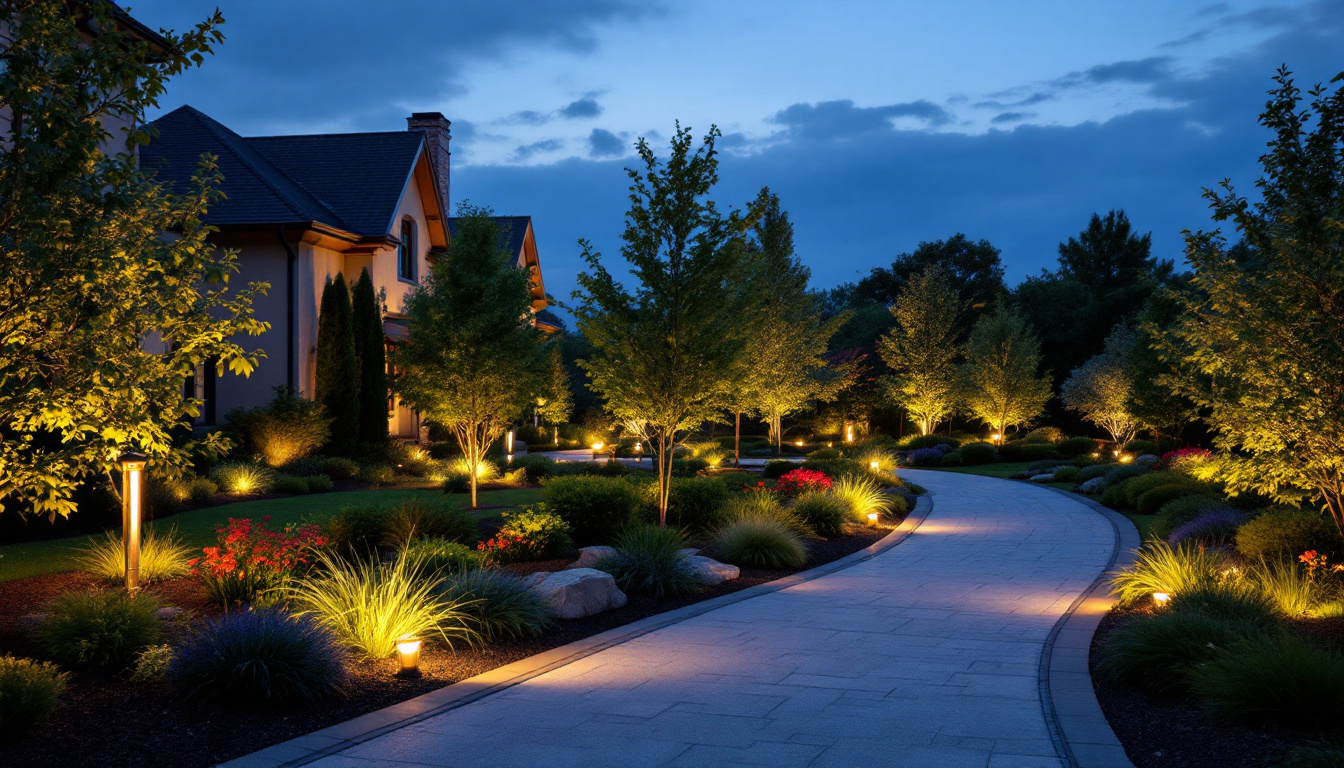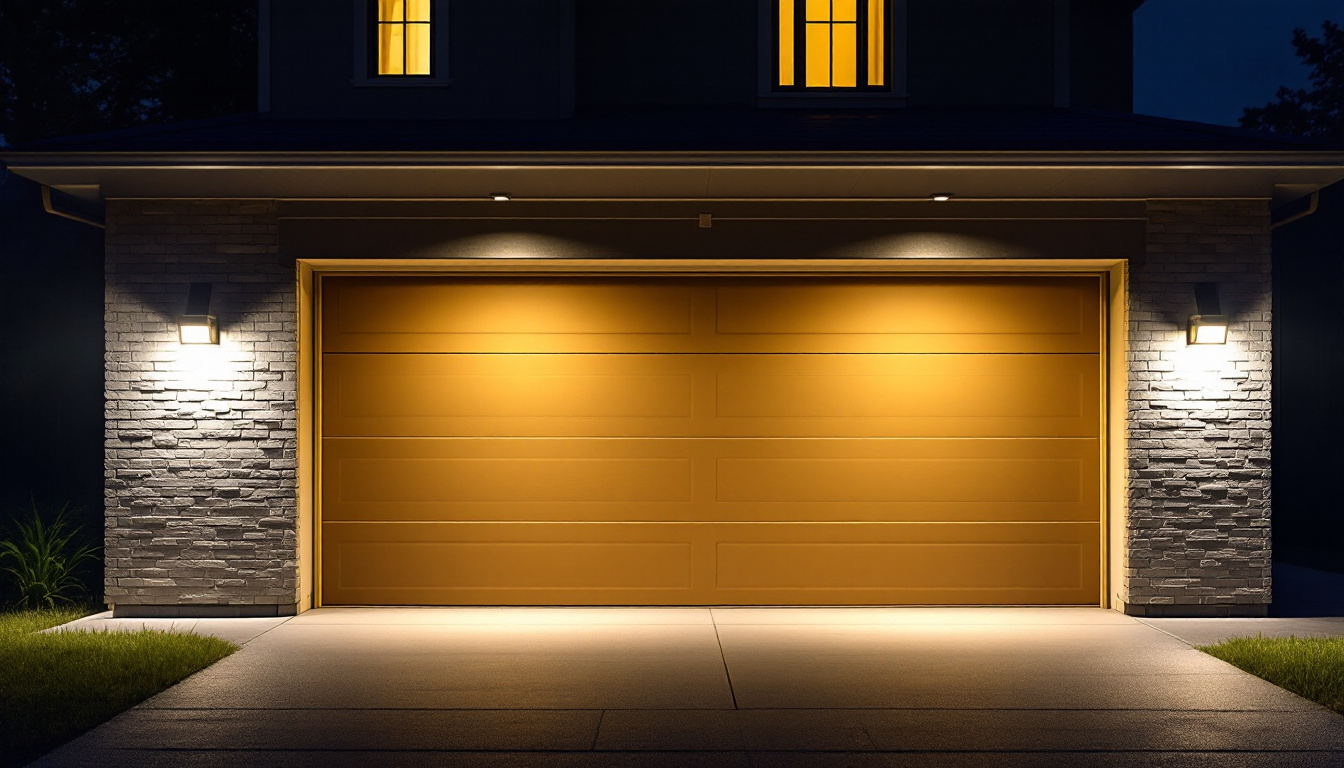
In the realm of industrial and commercial spaces, lighting contractors have traditionally focused on illumination technologies—LEDs, fluorescent fixtures, and smart lighting controls. However, a significant evolution is underway: the integration of industrial warehouse fans with lighting systems. This convergence is reshaping how contractors approach warehouse environments, offering enhanced energy efficiency, improved worker comfort, and optimized operational costs.
Industrial warehouse fans, once considered purely for ventilation and air circulation, now play a pivotal role in the lighting industry’s broader ecosystem. Their ability to influence ambient conditions directly impacts lighting performance and energy consumption, making them indispensable for modern lighting projects in large-scale industrial settings.
For lighting contractors, understanding the role of industrial warehouse fans extends beyond simple airflow management. Fans affect temperature regulation, which in turn influences how lighting systems perform and how much energy they consume. For example, excessive heat buildup can degrade the lifespan of LED fixtures, while proper air circulation can maintain optimal operating temperatures and reduce cooling loads.
Moreover, many contemporary lighting projects emphasize sustainability and energy savings. Integrating industrial fans with lighting controls can help achieve these goals by reducing HVAC demands and enabling more precise environmental management. This holistic approach aligns well with the increasing demand for green building certifications and energy-efficient industrial designs.
Furthermore, the synergy between industrial fans and lighting systems can lead to innovative design solutions that enhance both functionality and aesthetics. For instance, strategically placed fans can create dynamic airflow patterns that not only improve air quality but also highlight specific areas of a warehouse with targeted lighting. This can be particularly beneficial in environments where visibility is crucial for safety and productivity, such as manufacturing floors or distribution centers. By considering both elements in tandem, contractors can create spaces that are not only well-lit but also comfortable and conducive to efficient operations.
Additionally, the integration of smart technology into both lighting and fan systems offers exciting opportunities for automation and control. Advanced sensors can monitor temperature and occupancy, adjusting both lighting and fan speeds in real-time to optimize energy use. This kind of responsive system not only reduces waste but also enhances the overall user experience by ensuring that spaces are always at the ideal temperature and brightness levels. As the industry continues to evolve, the collaboration between lighting contractors and fan manufacturers will likely become even more critical, paving the way for smarter, more sustainable industrial environments.
The evolution of industrial warehouse fans parallels advancements in lighting technology. Initially, fans were standalone devices aimed solely at providing ventilation to large, often poorly insulated spaces. Lighting, on the other hand, was managed independently, with little consideration for environmental factors beyond illumination levels.
As industrial operations grew more complex, the need for integrated environmental control became apparent. Early attempts to coordinate lighting and ventilation were rudimentary, typically involving manual adjustments and separate control systems. However, the rise of smart building technologies has enabled a more sophisticated approach, where lighting and fans communicate via centralized building management systems.
One significant milestone was the development of variable speed drives (VSDs) for industrial fans. VSDs allow fans to adjust airflow dynamically based on real-time environmental data, reducing energy consumption during low-demand periods. When combined with adaptive lighting controls—such as daylight harvesting and occupancy sensors—this technology creates a synergistic effect that maximizes efficiency.
Another key advancement is the integration of Internet of Things (IoT) sensors that monitor temperature, humidity, and light levels. These sensors feed data into intelligent control systems that optimize both fan speed and lighting intensity, ensuring ideal working conditions while minimizing waste. For lighting contractors, familiarity with these technologies is essential to deliver cutting-edge solutions that meet client expectations.
Energy consumption is a dominant concern in industrial environments, where lighting and HVAC systems account for a substantial portion of operational expenses. Industrial warehouse fans contribute significantly to reducing these costs by enhancing air circulation and reducing the load on heating and cooling systems.
Industrial fans help distribute conditioned air more evenly throughout warehouse spaces, preventing hot or cold spots that force HVAC systems to work harder. This uniform temperature distribution can reduce heating costs in colder months by pushing warm air trapped near ceilings back down to the working level. Conversely, in warmer conditions, fans improve evaporation and heat dissipation, reducing the need for air conditioning.
Lighting contractors who recommend or specify industrial fans as part of their projects can help clients achieve substantial energy savings. Studies have shown that proper use of high-volume, low-speed (HVLS) fans can reduce HVAC energy consumption by up to 30%, a figure that translates directly into lower utility bills and improved sustainability metrics.
Heat is a primary enemy of lighting fixtures, particularly LEDs. Excessive temperatures accelerate lumen depreciation and can cause premature failure of electronic components. By improving airflow around fixtures, industrial fans help maintain cooler operating temperatures, thereby extending fixture lifespan and reducing maintenance costs.
Lighting contractors who integrate fan solutions into their designs can offer clients a compelling value proposition: not only energy savings but also reduced replacement frequency and downtime. This holistic approach enhances the overall return on investment for lighting installations.
When incorporating industrial warehouse fans into lighting projects, contractors must carefully consider several factors to ensure optimal performance and client satisfaction.
Choosing the right type and size of fan is critical. HVLS fans are popular for their ability to move large volumes of air at low speeds, minimizing noise and maximizing comfort. However, smaller, high-speed fans may be appropriate in certain zones requiring targeted airflow.
Placement is equally important. Fans should be positioned to complement lighting layouts, avoiding shadows or glare that could compromise visibility. Additionally, the airflow patterns should support the thermal management of lighting fixtures without creating drafts that might disturb sensitive processes or materials.
Modern lighting systems often include sensors and automated controls. Integrating fan controls with these systems can provide synchronized operation—fans ramp up when occupancy increases and lighting levels rise, then scale back during off-hours. This coordination enhances energy efficiency and occupant comfort.
Lighting contractors should collaborate closely with HVAC and building automation specialists to design control schemes that deliver seamless integration. Open communication and shared specifications ensure that fans and lighting work together harmoniously rather than in isolation.
Industrial environments are subject to strict safety and regulatory standards. Fans must comply with electrical codes, explosion-proof requirements (where applicable), and occupational safety guidelines. Lighting contractors should verify that fan products meet these standards and that installation practices adhere to local regulations.
Furthermore, proper maintenance access and safety guards are essential to prevent accidents and ensure long-term reliability. Including these considerations in project planning reduces liability and supports sustainable facility operations.
Examining real-world examples highlights the tangible benefits of combining industrial warehouse fans with lighting systems.
A major distribution center implemented HVLS fans alongside a comprehensive LED retrofit. The fans improved air circulation, reducing the facility’s heating and cooling demands by nearly 25%. Simultaneously, the LED upgrade cut lighting energy use by over 50%. The combined effect resulted in a 40% reduction in overall energy consumption, significantly lowering operational costs.
The lighting contractor played a key role in coordinating the installation and control integration, ensuring that fan operation complemented lighting schedules and occupancy patterns. The success of this project underscores the value of a multidisciplinary approach.
In a manufacturing plant with heavy machinery generating substantial heat, industrial fans were deployed to mitigate thermal buildup around lighting fixtures. By circulating air effectively, the fans maintained LED temperatures within optimal ranges, extending fixture life and reducing maintenance interruptions.
The lighting contractor’s involvement included specifying fan types, advising on control strategies, and ensuring compliance with safety standards. The client reported improved worker comfort and a noticeable decrease in lighting-related failures, validating the integrated design approach.
The future of industrial warehouse fans in the lighting industry is closely tied to advancements in smart technology and data analytics. As buildings become more connected, the potential for intelligent environmental control grows exponentially.
Artificial intelligence (AI) and machine learning algorithms are beginning to analyze data from sensors embedded in lighting and fan systems. These technologies can predict occupancy patterns, weather changes, and equipment usage to optimize airflow and lighting dynamically. For lighting contractors, this means designing systems that are not only energy-efficient but also adaptive and responsive.
As industrial facilities increasingly adopt renewable energy sources such as solar or wind, the integration of fans and lighting with energy storage and management systems will become critical. Coordinated control can balance energy loads, prioritize critical functions, and maximize the use of clean energy.
Lighting contractors who stay abreast of these developments will be well-positioned to offer future-proof solutions that meet evolving client demands and regulatory requirements.
The evolution of industrial warehouse fans from standalone ventilation devices to integral components of lighting systems represents a paradigm shift for lighting contractors. Understanding this synergy enables contractors to deliver comprehensive, energy-efficient, and sustainable solutions that enhance industrial facility performance.
By embracing integrated design, leveraging advanced technologies, and prioritizing collaboration across disciplines, lighting contractors can unlock new opportunities and provide greater value to their clients. The future of industrial lighting is not just about illumination—it’s about creating intelligent environments where air and light work together seamlessly.
As the lighting industry continues to innovate, LumenWholesale remains at the forefront, providing contractors with the high-quality, spec-grade lighting and fan products they need at the best wholesale value. Embrace the future of intelligent industrial environments with our extensive selection that meets the highest industry standards. Benefit from our commitment to affordability and convenience, with free shipping on bulk orders, ensuring you get the premium products you need without the hidden fees. Wholesale Lighting at the Best Value is not just a promise; it’s our guarantee to you. Elevate your projects with LumenWholesale today.

Discover the essential do’s and don’ts for lighting contractors when installing low voltage LED strip lights outdoors.

Discover the science and technology behind exit sign emergency light combos in this insightful guide tailored for lighting contractors.

Discover expert strategies for overcoming common challenges in landscape outdoor lighting projects.

Discover how strategic garage outdoor lighting can enhance the efficiency of your lighting projects.